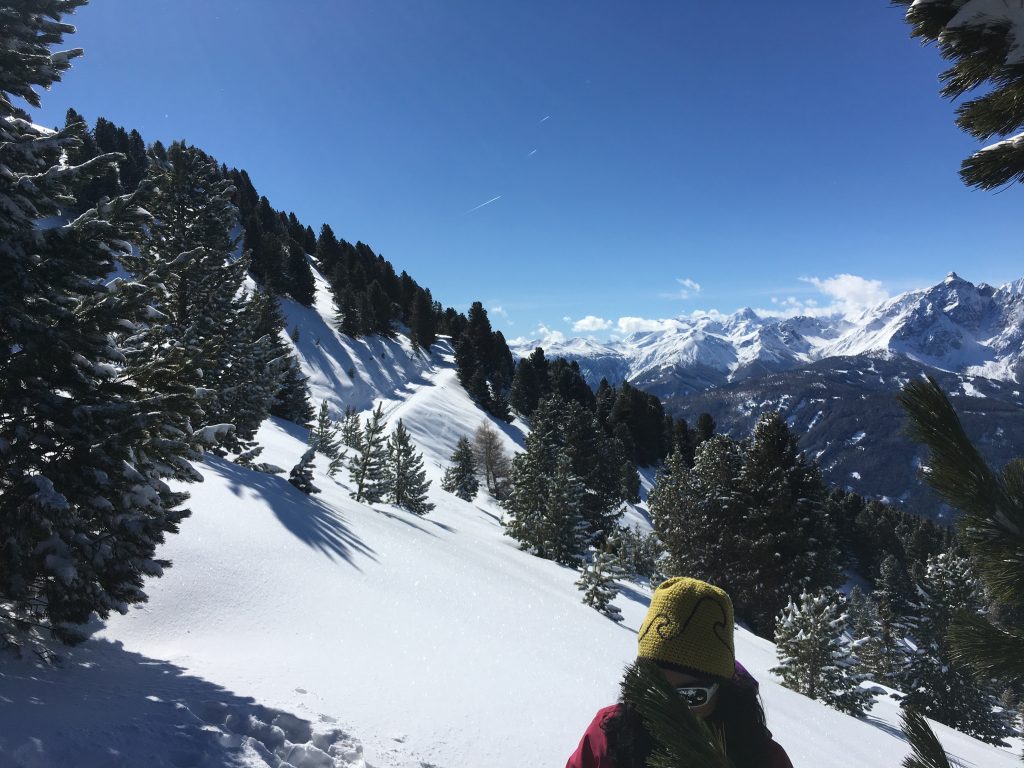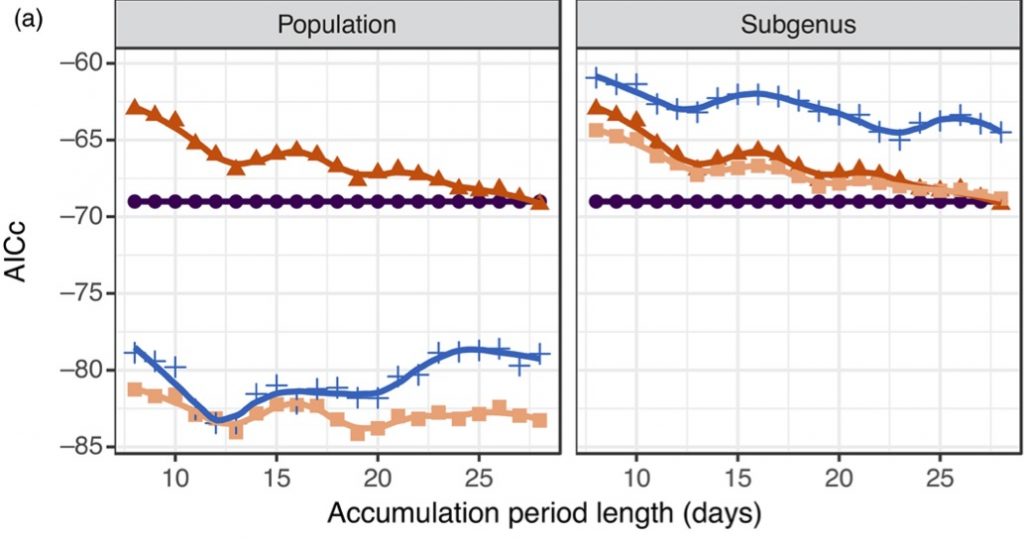
Our paper on the variations of UV-B absorbing compounds along elevation gradients has recently been published online in Journal of Ecology. In this study, as part of the Research Council of Norway funded PollChem project, we sampled pollen from pine trees from 5 different populations of elevation gradients in Europe.
Our goal was to investigate whether a single relationship between UV-B absorbing compounds and UV-B radiation could be observed across all sites, or whether the statistical models we used to describe this relationship needed to account for population-level variation. We also tested whether the results of the models changed as we varied the exposure length of UV-B radiation, investigating the optimal window of response.
The main result from the paper can be seen below. We found that population-level variation was important to consider when explaining the relationship in question, and that the optimal temporal window of response was somewhere between 12-19 days (depending on the model that was ultimately used). Although the overall relationship between UV-B absorbing compounds and UV-B radiation was positive, we found similar support for models which allowed for the same relationship across populations (but with a change in intercept), or models which enabled different relationships per population.
Moving forward it will be important to determine how much variation there is between more populations and across multiple years, and also to understand the cause of this variation between populations. This will determine whether reconstruction models should be focused on populations located close by to the reconstruction site, or whether integrated calibration models composed on multiple populations can be used.

